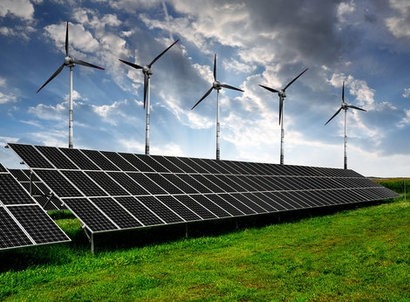
While 2022 saw disclosed contracted volumes dip to 8.4 GW - a 21 percent decrease from the 10.7 GW signed in 2021 - the total number of PPA deals in Europe increased by 4.5 percent, with at least 161 deals, as compared to 154 the year before.
Corporate PPAs held the fort, accounting for a remarkable 80 percent of the total deal count, and 83 percent of contracted volumes, in 2022. Corporate PPAs contracted capacity grew by at least 20 percent, up to 7 GW from the 5.8 GW in 2021. The increase in corporate deal count was even more pronounced, with 129 deals signed, up 29 percent on 2021 (100).
This is according to the European PPA Market Outlook 2023, the signature annual report from Pexapark, a provider of PPA price reference, enterprise software solutions, and advisory services specialised in renewable energy.
“The maturity of the PPA market shone through amid the European Energy Crisis, and the resiliency it exhibited was remarkable to say the least” said Luca Pedretti, Co-Founder and Chief Operating Officer (COO), Pexapark. “It’s fair to say that certain corporate procurement departments deserve awards for saving their companies from spiralling energy costs.”
As analysed in the report, short-term futures contracts reached such punishingly high levels that many corporate procurement managers took the bold step to safeguard cashflow and production costs by jumping into long-term PPAs. Activity of corporate and industrial (C&I) energy buyers increased substantially in 2022, as reflected by the rising prominence of industrial supply contracts in markets like Spain - which remains the largest market for PPAs in Europe.
While Information Technology (IT) firms continued to hold the top spot for contracted volumes - with 1.97 GW procured across 14 deals - Metals and Mining came in an extremely close second place, with 1.95 GW procured across 19 deals. Aluminium company Alcoa was the largest single buyer in Europe and Spanish Independent Power Producer (IPP) Greenalia was the largest seller, thanks to its deals with Alcoa.
This successful activity, however, does not mask the profound impact of market volatility and regulatory change on the continent’s renewable energy business models. The European Energy Crisis created extreme volatility throughout 2022 – with the most notable spikes in January and September, where volatility levels reached more than 230 percent. From January to December 2022, PPA prices increased by 23 percent, according to Pexapark’s EURO Composite PPA Trends.
High market prices moved down the forward curve, creating the phenomenon of extreme ‘backwardation’ which led to a notable price disparity between short-term and long-term PPAs. These conditions accelerated the shift towards short-term PPA agreements, as power producers moved to adopt more active energy trading strategies with a rising focus on short-term hedges.
Indeed, as investors’ merchant appetite increased, certain financing deals were underpinned by short-term PPAs or no PPAs at all, especially those leveraging instruments such as flexible construction facilities, or all-equity short-term financing. By contrast, those without robust risk management in place for their long-term Baseload PPAs, found themselves exposed to a combination of high prices, decreasing capture factors and under-production, leaving a series of assets in significant financial distress, especially in the Nordics area.
The report states that appetite for Baseload PPAs wavered in line with market conditions. The price shocks of 2022 threw a spanner in the works for further uptake of these PPAs outside a certain class of sellers, who may now have a further competitive advantage in providing the much-discussed ‘24/7 Green Supply’ capability to buyers.
Further uncertainty has been generated by ongoing regulatory changes across all major European energy markets. These are analysed in detail in Pexapark’s Outlook report as part of a ‘Risk Assessment’ review of all national emergency measures in the form of windfall taxes and price/revenue caps.
In 2023, country-specific policy and regulation will continue to have a key impact on activity in respective markets. Renewables players will be significantly more alert, making regulatory monitoring standard procedure, while incorporating revenue impacts on hedging decisions.
According to Pexapark, 2022’s notable developments are catalysing the rise of the ‘Next Generation Investor (NGI)’ as manifested by the actions of leading IPPs and funds. The NGI archetype is defined as “businesses equipping themselves with a range of advanced tools, including sophisticated data and analytics, investment management systems, and a risk management mindset applied to a diversified, hybrid portfolio consisting of wind, solar and storage assets across multiple price zones.”
“2022 was a year of ‘shock therapy’ for renewables investors” added co-author of the report Maritina Kanellakopoulou, Senior Insights Analyst at Pexapark. “For those who were caught out by the market conditions - and equally for those who weren’t - the turmoil made it a necessity to better understand and manage energy risks. According to a market survey we conducted, a hefty 65 percent of sellers and buyers stated that enhancing energy risk management capabilities is a priority. When drilling down to IPPs, this statement was made by 54 percent of such business type participants.”
The report concludes that such practice will strongly benefit the renewables market, and build resiliency and readiness to tap opportunities, whether there’s a pricing crisis or not. It is expected that this will be the ‘new normal’ heading into 2023.
Pexapark’s Top predictions for 2023
1. The popularisation of Short-Term PPAs
Moving forward, managing renewable revenue with a mix of short- and long-term PPAs will become the norm.
2. The evolution of the Tripartite PPA
Project owners, utilities and corporates will join forces, leveraging each of their individual strengths and competencies to conquer the PPA market.
3. The coming of age of Co-location and Flexibility
Volatility and system costs will increase the share of renewables-plus-storage and bring to the fore PPAs reflecting both energy sale and storage elements.
For additional information:

